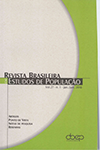Socio-spatial segregation and insertion in the labor market in the Metropolitan Region of Campinas, Brazil
Keywords:
Residential segregation, Labor market, Spatial mobility of the populationAbstract
Based on the premise that “space matters,” the present study is intended as a contribution to the analytic efforts focused on investigating the impact of segregation, understood here as how the concentration in space of similar socioeconomic strata affects the ability of individuals and families to respond to the numerous problems and risks involved in large urban areas. More specifically, the article consists of an investigation into whether, for the case of an emerging metropolitan region in Brazil (Campinas, in the State of São Paulo), there are indications of the effect of segregation on the various characteristics of the inclusion of individuals in the labor market. Data from the Federal Demographic Census of 2000 show how unemployment, formality of labor, and the social protection of the economically active population are influenced both by the sociodemographic characteristics, including migratory status and condition of intraurban mobility (pendularity), and by the population’s physical location in the region. As a spatial variable related to segregation, a measure is proposed on Moran’s Local rate, which seeks to identify homogeneous areas in terms of the socioeconomic composition of their inhabitants. Although the results obtained are not conclusive, they do suggest the importance of location on way individuals are absorbed by the labor market. This finding corroborates several of the theoretical propositions taken into account in this studyDownloads
Downloads
Published
How to Cite
Issue
Section
License
Papers published in Rebep are original and protected under the Creative Commons attribution-type license (CC-BY). This license allows you to reuse publications in whole or in part for any purpose, free of charge, even for commercial purposes. Any person or institution can copy, distribute or reuse the content, as long as the author and the original source are properly mentioned.

